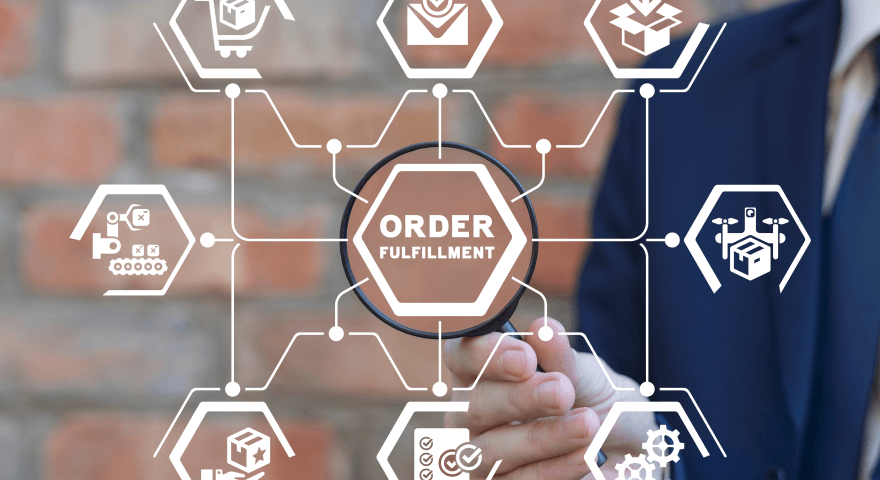Today’s internal complexity article concludes the insight into the eight root causes of the supply chain performance gap. Internal complexity means complexity resulting from inside the company such as organizational structure, type of organization, number and types of processes, internal and external interfaces, corporate culture, business activities (e.g., product and service development), and mergers and acquisitions. The good news is that internal complexity can be directly influenced and reduced through different actions, from executive decisions on business and corporate structure to processes, personnel, and products.
Before companies can take measures to influence and reduce internal complexity, it is necessary to gain the competence to recognize it. Internal complexity is a permanent issue resulting from growth: creating new products and services, entering new regions, moving into new businesses, etc. Expansion inevitably means higher complexity. As McKinsey stated in a nutshell: „When time, energy, and resources are spent on activities and interactions that don’t create value, complexity starts to damage a company’s performance.“ At that point, companies need to take action. The aim is to handle complexity well instead of avoiding it because complexity means growth. A survey of 377 executives in North America, Western Europe, and Asia contacted jointly by Bain & Company and EIU in March 2011 showed that only one in nine companies grow sustainable, while most fail due to internal complexity:

Let’s focus on the non-value-adding aspects of internal complexity, such as the extent of duplication of activities, roles, and responsibilities and the frequency of change in the organizational structure. As a result, internal complexity drives several challenges: increasing internal costs, unaligned processes that create inventories and working capital, slow-down of responsiveness and flexibility, and unpredictable outcomes that reduce reliability towards customers and Supply Chain partners. Most definitely risks one wants to eliminate. How do we do that?
Measurable supply chain performance is the basis for optimization
Wielding introduced the Supply Chain complexity triangle and defined three independent and still interacting parameters resulting in the dynamics of supply chains:
1. Demand amplification: Also referred to as the bullwhip effect
2. Parallel interactions: Actions occurring at the same tier in a supply network
3. Deterministic chaos: Theoretically, a supply chain is predictable. In practice, however, the system is less predictable due to the non-linear effects of many causes. It is also very sensitive to the initial conditions, so a tiny change in the initial condition of a system variable can lead to a completely different reaction.

From a complexity perspective, supply chain management encompasses the coordination of many elements that can take over different states and be connected via different relations. A supply chain can thus be interpreted as a system above the threshold at which it is not possible for an observer to relate all elements of a system to each other.”
(Aelkner et al.)
Furthermore, the trend towards larger companies is increasing to a downright consolidation trend that we are experiencing today. Corporates buy and take over smaller companies, making the organization more and more complex and diverse. The interaction between corporate functions and business units is becoming more difficult. This results in functional, regional, and also business unit silos. At the same time, IT complexity increases enormously.
To have a starting point for optimization, it is inevitable to make complexity measurable, such as in costs, speed, and other performance indicators. In that context, it is essential to differentiate between value-creating and value-destroying complexity. Why? Value-creating complexity needs measures to be managed wisely to benefit from the value creation. Value-destroying complexity, on the other hand, need measures to be eliminated.
Common literature in the management of supply chain complexity always speaks of three major steps: identifying complexity drivers, measuring and evaluating the existing complexity, and developing strategies for managing complexity. We already named several reasons that lead to increasing internal complexity for companies in general. Let us now take a look at supply chain specific consequences:
1. Information gaps lead to time-consuming alignment processes
Many companies are struggling with the single point of truth. Defragmented system landscapes, also resulting from mergers and acquisitions, lead to the duplicity of one piece of information and, worst case, several different values. This results not only in higher complexity but also in legal risks. The manual workload increases tremendously; supply chain personnel faces a more time-consuming, non-value-adding workload in times of digitalization. Complex processes create longer lead times, need higher effort, and cause uncertainty and variance in the outcome.
2. Decisions are taken based on different targets and information states
As already mentioned, business functions, units, or regions are handling divergent information and, as a result, are taking divergent decisions. This can cause operative and strategical risks as well as opportunity costs.
3. Complex organizations are unable to react to changes quickly
The more complex organizations become, the more sluggish they react to changes. From a cross-functional perspective, supply chain management is highly dependent on transparency, unambiguousness, and an overall objective as a basis for fast and reliable decision-making.
In general, complex processes create longer lead times, need higher effort, and cause uncertainty and variance in the outcome. Complex systems create huge maintenance efforts, mistrust, and thus various shadow systems. The typical reactions in unaligned supply chains are buffers in time, capacity and inventory.
What are the ways of improvement?
Companies can resort to different transformation tools in all three steps to effectively manage internal complexity (identifying complexity drivers, measuring and evaluating the existing complexity, and developing strategies for managing complexity). In the past, the focus of the analyzes was more on the area of descriptive analytics due to technology and methods. That means values from the past were recorded and interpreted. Today, predictive and prescriptive analytics are also used to forecast the future as precisely as possible and optimize processes. Mathematical and statistical methods, procedures, and models are used here. Processes and events can be analyzed automatically, and specifications for the planning and controlling processes can be derived. Let us take a look at seven key technologies that have the potential to manage internal complexity better, reduce internal complexity through transparency and integration, and turning internal complexity into business opportunities:
1. Supply Chain Analytics (SCA)
The more intransparent the situation in a supply chain is for the various functional areas and participants, the more internal complexity reduces performance. Thus, end-to-end transparency in a supply chain down to the level of individual transaction documents, sensor data, planning information, etc., based on a modern Supply Chain Analytics system will help to manage internal complexity better and step-by-step to streamline business operations and reduce complexity.
2. Forecasting and Predictive Analytics
In every company, decisions have to be made under uncertainty. For example, capacity needs to be ramped up in production sites without knowing future demand precisely. Long-lead-time components need to be procured before customer orders are known. Shift models need to be arranged before the actual load in production and logistics is clear. Each of these decisions implies a forecast of future customer demand. If every functional unit – engineering, procurement, operations – makes its own plan to drive its decisions, the chances are high that these plans are inconsistent, leading to non-optimal decisions. Predictive analytics support demand forecasting at strategic, tactical, and operational levels that drive consistent supply chain planning processes in network design, capacity planning, production planning, procurement, and inventory management.
3. Cloud Technologies
Cloud computing describes the provision of IT infrastructure and IT services such as storage space, computing power, or application software as a service via the Internet. Cloud services can be divided into three levels: infrastructure as a service (IaaS), platform as a service (PaaS), and software as a service (SaaS). Advantages of cloud technologies are versatile: customers can focus on their core business, costs are scalable, it is based on a consumption-oriented billing model (pay as you use), allows short implementation times, reduced complexity, relieves customers of the effort required to maintain the software used and the risk lies with the provider, etc. Cloud computing enables organizations to easily share information and applications, leading to faster decision processes and consistent results.
4. Closed-Loop Decision-Making
The more complex an organization is, the more critical it is to follow up on decisions and ensure that they are executed. A digital model of decisions and the resulting action plan is required to support execution and track progress. Blockages thus become immediately visible, and countermeasures can be initiated. The organization needs to see the impact of decisions, i.e., the actual business results, and can learn from this about the effectiveness of decisions and the ease of executing the related tasks.
It is easy to see how internal complexity arises in modern companies as a constant phenomenon. Successful management means transforming it into a business advantage instead of altogether avoiding internal complexity. In times of big data, growing businesses, and speed of innovation, technical solutions are an inevitable part of staying ahead. A transparency layer is needed to understand what is going on in the organization down to the transactional level. A closed-loop decision-making process, providing a digital model of the resulting task and activity structure, measuring the business impact, and learning from past decisions is an indispensable tool to drive the performance of organizations. This is even more important the more complex the organization is.





.jpg)



.png)
